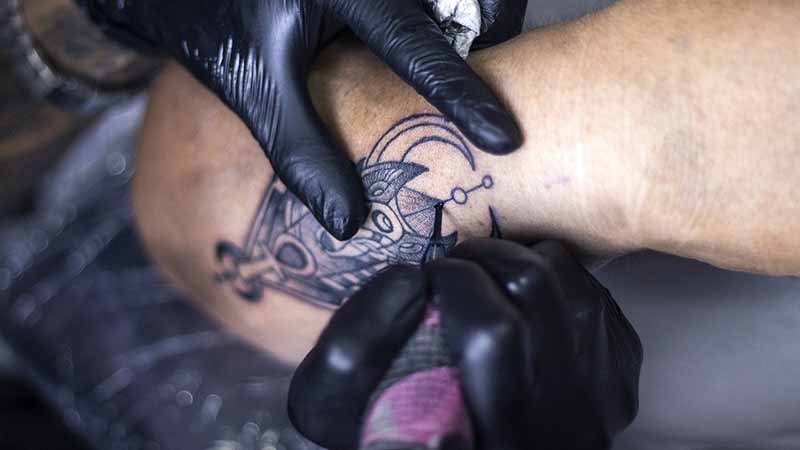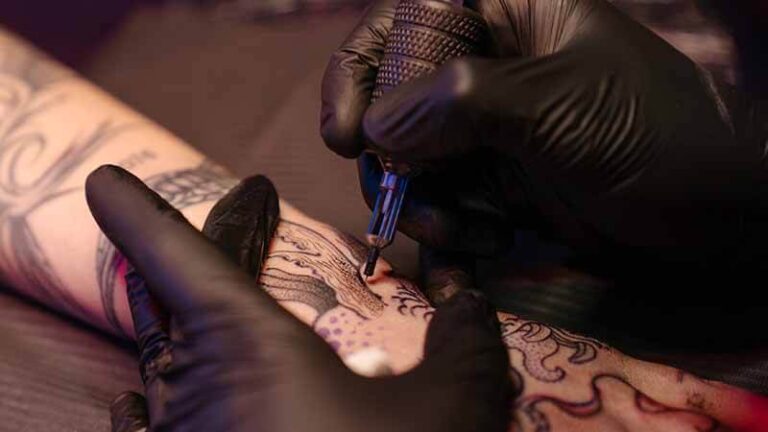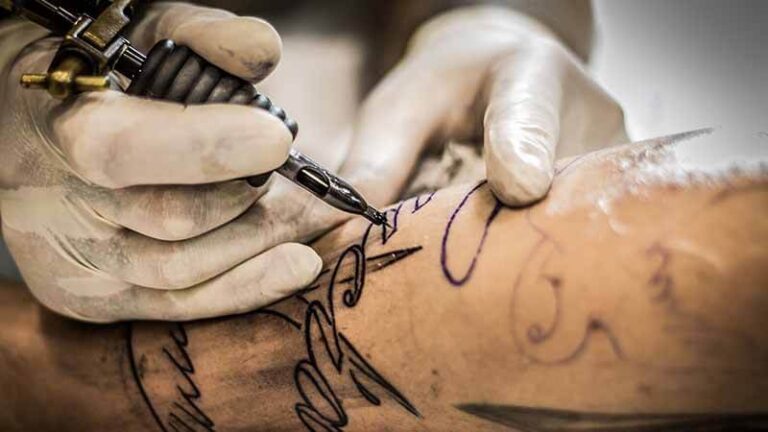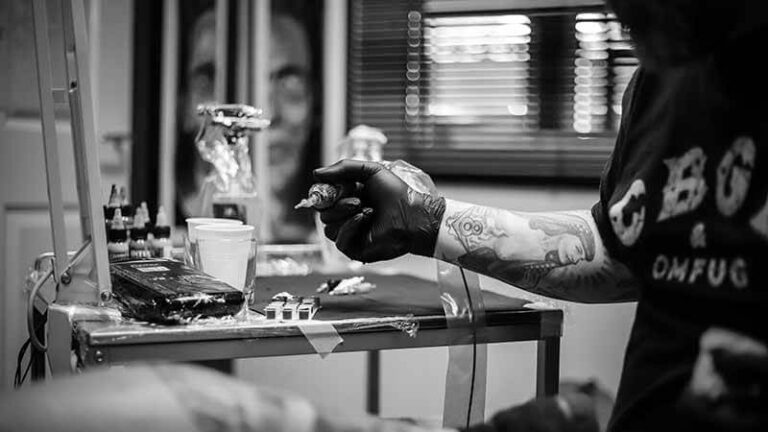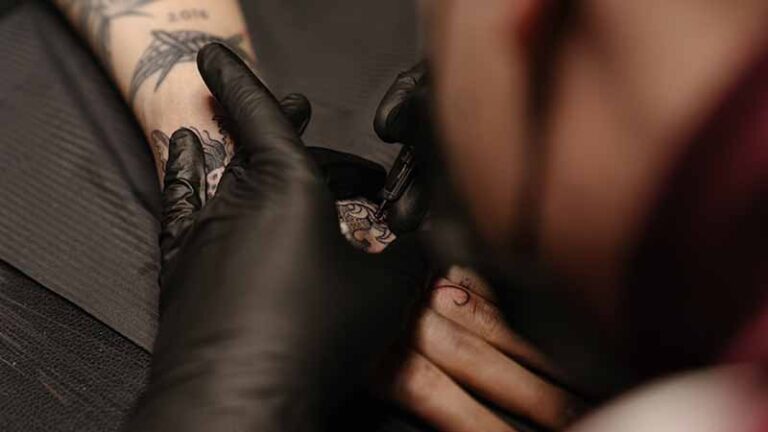Wireless Tattoo Machine VS Traditional Tattoo Machine: Which is Better?
The tattoo industry is a vibrant and ever-changing subset of the larger realm of art and body modification. It refers to the process of applying ink or colors to the skin in order to create detailed and meaningful artwork.
Tattoos have a lengthy history, with evidence of their use extending back thousands of years in numerous cultures throughout the world. Tattoos have evolved from cultural emblems to personal manifestations of identity, art, and storytelling over time.
Tattoos have enjoyed a tremendous resurgence in popularity in recent decades, surpassing previous prejudices and gaining acceptability in mainstream society.
Factors such as the growth of tattoo artists as respected professionals, the diversification of tattoo styles and procedures, and the impact of celebrities sporting tattoos have all contributed to this transition.
The demand for high-quality tattoo equipment and supplies, such as tattoo machines, has increased as the business has evolved. These equipment are used by tattoo artists to create precise and artistically appealing designs on their clients’ skin.
The tattoo machine chosen is critical to the artist’s ability to execute their craft efficiently, thus it’s critical to grasp the distinctions between the many types of tattoo machines on the market.
Importance of choosing the right tattoo machine
Choosing the appropriate tattoo equipment is critical for both tattoo artists and their clients. This is why:
- Tattoo Quality: The tattoo machine has a direct impact on the tattoo’s quality. Line thickness, shading effects, and color saturation can all be produced differently by different machines. The capacity of an artist to create the intended results is frequently dependent on the machine they use.
- Precision and Control: To create crisp lines and complex details, tattoo artists must have perfect control over the machine’s motions. Using the incorrect machine can result in wavy lines, irregular shading, or uneven color distribution.
- Client Satisfaction: Tattoo artists who can create the desired design with finesse are sought after by clients. A faulty machine might produce substandard results, leaving clients disappointed and harming an artist’s reputation.
- Comfort and Ergonomics: Tattoo artists frequently work for long periods of time, thus comfort is an important consideration. The ideal machine should be easy to hold and use, lowering the danger of artist fatigue.
- Long-Term Viability: Tattoo machines are an investment, thus artists must think about the lifetime and durability of the devices they choose. Well-made equipment will survive for years and will provide a good return on investment.
- Adaptability: Different tattoo styles and processes may necessitate the use of different types of machines. Choosing a machine that can accommodate a variety of styles increases an artist’s versatility.
The primary goal of this blog post is to present a thorough and informative comparison of wireless tattoo machines and traditional tattoo machines. The essay intends to aid tattoo artists and enthusiasts in making an informed choice when selecting a tattoo machine by covering numerous issues such as performance, pricing, and ease.
Wireless Tattoo Machines
Tattooing has progressed greatly over the years, with the development of wireless tattoo machines being one of the most important advancements in the business. These machines deviate from the standard tattoo machine design, providing tattoo artists with a new degree of convenience and versatility in their trade.
What is a wireless tattoo machine?
A wireless tattoo machine, sometimes known as a cordless tattoo machine, is a modern tattoo instrument that does not require a physical power cord or cable connection.
Instead, rechargeable batteries or wireless technology power this equipment, allowing tattoo artists to operate without being attached to a stationary power source. This wireless design offers a number of benefits and considerations.
Advantages of using a wireless tattoo machine
Portability and flexibility
Wireless tattoo machines provide unrivaled portability, allowing tattoo artists to roam freely throughout their workstations without being constrained by a power cord. This mobility is especially useful while working on huge or detailed patterns, allowing artists to position themselves optimally for exact results.
Reduced cord hassle
Traditional tattoo machines are often powered by a cord that can be inconvenient and prone to tangling. Wireless machines reduce this inconvenience, improving overall production and lowering the possibility of tattoo session disruptions.
Enhanced maneuverability
The lack of a connection also increases the tattoo machine’s agility. Artists can move more easily around the client’s body, resulting in smoother lines and more intricate detailing. This increased mobility can be very useful for making elaborate or detailed tattoos.
Limitations of wireless tattoo machines
Battery life concerns
The dependency on batteries is one of the key constraints of wireless tattoo devices. While battery technology has advanced tremendously, artists must still deal with battery life concerns during lengthier tattoo sessions. Running out of battery power in the middle of a tattoo might disturb the process and result in discrepancies in the finished design.
Initial investment
Wireless tattoo machines have a greater initial cost than typical corded devices. This price difference is due to the technology and engineering necessary for wireless operation. When considering whether the first investment is justifiable, artists must carefully assess their budget and long-term needs.
Performance variations
The performance of wireless tattoo machines varies according to the model and manufacturer. Certain cordless machines may not deliver the same level of consistency and precision as their tethered equivalents for some artists.
Motor power, battery efficiency, and construction quality can all have an impact on performance, thus artists must carefully research and select their wireless machines.
Traditional Tattoo Machines
For many decades, traditional tattoo machines, also known as coil tattoo machines or rotary tattoo machines, have formed the backbone of the tattoo industry. These machines have a time-tested design and have played an important part in the advancement of tattoo artwork. In this section, we shall define classic tattoo machines and examine their benefits and drawbacks.
What is a traditional tattoo machine?
Tattoo artists utilize classic tattoo machines to produce permanent drawings on the skin. These machines are distinguished by their well-known, distinctive design, which incorporates coils, an armature bar, and needles.
Traditional tattoo machines work by using electromagnetic coils to drive the armature bar up and down, causing the needles to penetrate the skin and deposit ink.
Advantages of using a traditional tattoo machine
Consistency in performance
Traditional tattoo machines are well-known for their dependability. They allow tattoo artists to precisely regulate the depth and speed of needle penetration, resulting in consistent and predictable tattoo results. This constancy is required to achieve clean lines and complex designs.
Reliability
Traditional machines are noted for their long-lasting performance and durability. They are popular among professional tattoo artists due to their dependability and inexpensive maintenance requirements. A well-built conventional tattoo machine can provide years of steady service if properly cared for.
Lower initial cost
Traditional tattoo machines often have a lower initial cost than their wireless or technologically advanced counterparts. As a result, they are appealing to aspiring tattoo artists and those on a small budget. Because traditional machines are inexpensive, artists can enter the sector without incurring large financial costs.
Limitations of traditional tattoo machines
Tethered operation
The requirement for a corded connection to a power supply is one of the fundamental drawbacks of classic tattoo machines. Tattoo artists’ mobility is limited by this tethered operation since they must stay within the range of the power cord. While some musicians can work around this constraint, it might be inconvenient when compared to wireless options.
Limited mobility
Traditional tattoo machines are connected, which limits an artist’s ability to move freely around a client’s body. Working on larger tattoos or navigating complicated body curves can be difficult due to this constraint. It can be difficult for some artists to manage the cord while retaining exact control over the machine.
Noise and vibration
Traditional tattoo machines can be quite noisy and cause obvious vibrations when in use. While this may not be a major problem for many artists, it should be considered in situations when a quieter and less conspicuous machine is required. Clients may also find the noise and vibration unpleasant, impairing their entire experience.
Performance Comparison
Tattoo quality and precision
Wireless Machines’ Impact on Tattoo Quality
Depending on the circumstances, the impact of a wireless tattoo machine on tattoo quality can be both beneficial and bad. These machines are frequently lauded for their accuracy and ability to produce thin lines and detailed features.
Artists may work more easily and flexibly using wireless tools, resulting in smoother curves and precise design implementation. Furthermore, wireless machines are known for causing less damage to the skin, which can result in faster healing and less ink spread.
However, there are worries about tattoo quality when using wireless equipment. Battery life and power output consistency can affect the machine’s ability to maintain a consistent pace and depth, perhaps resulting in changes in line thickness and color saturation.
Tattoo artists must carefully control battery levels during lengthier sessions to achieve consistent results. In conclusion, while wireless devices provide accuracy benefits, maintaining high-quality tattooing is frequently dependent on battery management and equipment quality.
Consistency with traditional machines
Traditional tattoo machines have a well-deserved reputation for producing consistently high-quality tattoos. They run on a constant power supply, guaranteeing that the needles travel at the same speed and depth throughout the tattooing procedure.
Because consistency is essential for creating clean lines, shading, and detailed designs, classic machines are favored by artists who value regularity and precision.
Speed and efficiency
Efficiency of wireless machines
Wireless tattoo machines are frequently praised for their ease of use, especially in terms of setup and operation. Artists can quickly switch between needle setups, eliminating downtime during tattoo sessions.
The lack of connections and power supply simplifies the workstation, allowing artists to work more comfortably and efficiently. Furthermore, the reduced setup time might result in shorter overall tattooing sessions, increasing efficiency for both the artist and the customer.
Speed of traditional machines
Traditional tattoo machines are renowned for their speed and ability to complete tattoos in a timely manner. Traditional machines’ continuous power supply and mechanical operation allow for rapid needle movement, making them perfect for artists who stress speed in their work. This quickness comes be handy when working on larger tattoos or projects with tight deadlines.
Noise and vibration
Noise levels with wireless machines
When compared to regular devices, wireless tattoo machines are often quieter. The elimination of the buzzing sound associated with standard coil machines leads to a more comfortable and silent tattooing environment. Both the artist and the client will welcome the lower noise level because it provides a less threatening and more relaxing setting.
Traditional machine’s noise and vibration
Traditional tattoo machines, particularly coil machines, are notorious for their characteristic buzzing noise and vibration while in use. While some artists and clients may find this comforting and familiar, others may see it as a disadvantage.
Some people find the loudness and vibration disturbing, especially during lengthy tattoo sessions. These components, however, might contribute to the entire experience for individuals who like the classic characteristics of tattooing.
Cost Considerations
When deciding between wireless and traditional tattoo machines, price is an important consideration. This section delves into the financial ramifications of both types of machines, including both the original investment and long-term costs.
Initial investment
Cost of wireless tattoo machines
When compared to traditional tattoo machines, wireless tattoo machines have a greater starting cost. The price difference is due to the high technology and engineering necessary to make wireless machines work without connections. The price of a wireless machine might vary greatly based on its brand, model, and features. High-end wireless devices with sophisticated capabilities may be expensive, requiring tattoo artists to make a considerable initial investment.
Cost of traditional tattoo machines
Traditional tattoo machines, whether coil or rotary, are less expensive in terms of initial investment. For decades, these machines have been a fixture in the industry, and their design is well-established, allowing for efficient and cost-effective manufacturing. As a result, tattoo artists, particularly those just starting out or on a small budget, typically find traditional machines more affordable.
Long-term expenses
Battery and maintenance costs for wireless machines
While wireless tattoo machines may require a higher initial expenditure, they may save money in the long term. Rechargeable batteries are required for wireless machines, and the cost of replacing or maintaining these batteries over time should be considered.
Battery life can vary depending on the machine’s quality and how frequently it is used. Artists must consider the expense of replacement batteries as well as any associated maintenance, such as cleaning battery connections and maintaining proper charging processes. These recurrent expenses can add up, but they are usually manageable.
Maintenance costs for traditional machines
Traditional tattoo machines are well-known for their dependability and longevity, which can result in lower long-term maintenance expenses. They do require routine maintenance, such as cleaning, lubrication, and the replacement of parts (such as springs or armature bars).
The maintenance requirements, on the other hand, are often simple and may be undertaken by the tattoo artist or a professional without incurring considerable costs. Traditional machines’ dependability and ease of maintenance contribute to their long-term cost-effectiveness.
Convenience and Ease of Use
Tattoo artists must consider convenience and ease of use while deciding between wireless and traditional tattoo machines. This section delves deeply into key qualities, such as portability and flexibility, as well as the setup and functioning of each type of machine.
Portability and flexibility
Wireless machine’s convenience for artists
When it comes to portability and flexibility, wireless tattoo machines are unrivaled. Artists can move freely around their workspace, modifying their position to create optimal angles for precise tattooing, because they operate without connections or cables.
This mobility is especially useful when working on larger or more intricate tattoo designs when the flexibility to relocate easily can have a considerable impact on the final result’s quality.
Furthermore, because wireless machines do not require a set power supply, they are ideal for on-the-go artists visiting conventions or providing tattoo services outside of their studios.
Traditional machine’s limitations in terms of mobility
Traditional tattoo machines, on the other hand, have mobility constraints due to their tethered functioning. These machines necessitate a continuous connection to a power supply via a cord, which can limit an artist’s mobility.
Artists must keep within the cord’s range, making it difficult to operate on client body regions that are far from the power source. This limitation can make it difficult for the artist to attain appropriate positioning, thereby impacting the quality and efficiency of the tattooing procedure.
Setup and operation
Ease of setting up a wireless machine
In general, setting up a wireless tattoo machine is simple and user-friendly. Because there are no cords to connect, artists may swiftly assemble and disassemble the machine without having to deal with cable management.
Wireless devices frequently have user-friendly interfaces and controls that allow artists to easily modify settings like speed and needle depth. This shortened preparation method can save critical time during tattoo sessions, contributing to the artist’s overall efficiency.
Traditional machine’s setup and operation process
Traditional tattoo machines, particularly coil machines, require a slightly more complicated setup and operation procedure. Artists must use a cord to connect the machine to a power supply, ensuring a secure and steady electrical connection.
Furthermore, artists must manually fine-tune the machine’s parameters, modifying factors such as needle depth and speed by physically adjusting the machine’s components. While professional tattoo artists are well-versed in this procedure, beginners or artists new to a particular machine may require more time and effort.
Conclusion
In conclusion, it is critical to underline the importance of considering individual preferences while deciding between wireless and traditional tattoo machines.
Tattooing is a highly individualistic and artistic profession, and what works well for one artist may not be the best choice for another. The relevance of personal tastes emphasizes the reality that there is no one-size-fits-all solution in the wireless vs. traditional machine issue.
Tattoo artists have distinct styles, techniques, and work settings, and these aspects heavily influence their equipment selection. Because some artists value portability and mobility, wireless machines are a good choice for them. Others may favor classic equipment’ dependability and consistency.
Artists can make choices that correspond with their comfort, workflow, and aesthetic vision by respecting the range of tastes throughout the tattooing community.

